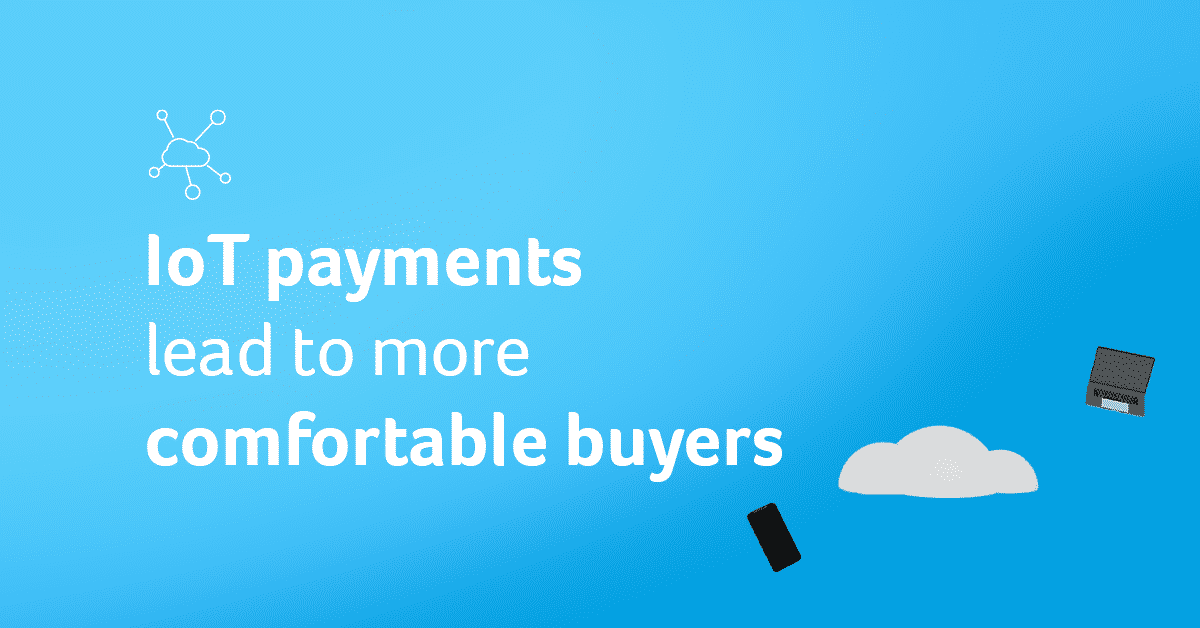It’s hard to imagine a life without the internet. It’s ubiquitous. From the moment we wake to the moment our heads hit the pillow, almost all of us have it at our fingertips. It’s how we work, play, shop, manage our finances, stay informed and communicate.
It connects us to what’s most important.
But it’s in a world where everything is connected that the next frontier of payment awaits. Soon, the Internet of Things (IoT) could take users out of the payment picture altogether. Our devices will do the talking — and the spending — and merchants will need to be ready for what comes next as users become more comfortable shopping via smart home technology.
What is the Internet of Things (IoT)?
Broadly speaking, the term “Internet of Things” covers everything that can be connected to the internet. Increasingly, however, the definition has zeroed in on objects and devices that can “speak” to one another across networks.
When these connected devices are combined with automated systems, it’s possible to gather and analyse data, and use that data to create an action, routine or process.
For example, an individual could set a GPS perimeter boundary around their property using their smartphone. When they leave that area, their smartphone “tells” their thermostat to lower the temperature. And when they re-enter the area, the thermostat knows to increase the temperature, meaning they return to a nice warm home. That is the IoT in action.
Where do payments fit with the IoT?
To make the shopping experience easier for customers, merchants need to find ways to further promote frictionless spending. Removing obstacles and objections and minimising the steps to payment will always be key to converting a browser into a buyer, online and off.
And thanks to advances in technology, consumers now have a smarter way to pay at their fingertips. They have the option of leaving their card in their wallet and paying with their smartphone or smartwatch, smoothing the payment process. This has proven popular, but even this streamlined approach could appear outdated in the not-too-distant future.
The interconnectivity of the IoT could lead to transactions taking place via all manner of objects and devices, such as a buyer’s car, smartspeaker, or even their fridge — and sometimes without any human intervention.
Right now, consumers in the US can order their favourite pizza through their voice-activated devices. Pizza Hut and Domino’s both support ordering via Amazon Alexa and Google Assistant, meaning the user can simply say “OK Google, talk to Domino’s” and they’re guided through the ordering process. And once they’re ready to purchase, the transaction is handled by Google Pay, making the entire payment process seamless and invisible.
Likewise, there are refrigerators on the market today, like those built by Samsung, that can tell if you’re running low on food, and place orders on your behalf to keep your fridge full.
And we envisage a near future where connected cars will pay for their own petrol and parking by “talking” to the petrol pumps and parking meters. Yet this minor leap from science fiction to science fact is merely scratching the surface when it comes to the IoT’s payment potential.
The future of IoT payments
It’s estimated that by the end of 2020, some 30 billion devices will be connected to the internet.
For context, the world’s population stands at 7.5 billion, and 3.5 billion of us have smartphones. This clearly suggests that many people will have multiple connected devices, and will in time come to expect a seamless user experience across all of them.
A streamlined payment experience will also be crucial to the success of the IoT. It’s expected to generate $13 trillion in revenue by 2025, but this will only come to fruition if users are convinced of the security and convenience of IoT payments.
Less cash = smoother spending
While a completely cashless society may still be some way off, a society that uses far less cash is just around the corner. Merchants need only look at the initial success of Amazon Go to witness the potential of IoT payments in action.
Amazon’s cashless convenience store turns the shopping experience on its head. By using cameras, sensors, smart shelves and algorithms to track customers and monitor their purchases, the very idea of queuing, checkouts or cashiers is consigned to the past. Shoppers simply pick up the products they want and walk out the store; Amazon’s IoT technology knows what they’ve taken and charges them automatically.
As consumers become more comfortable with the idea of using less cash for everyday purchases, cashless spending will become more appealing. Confidence, therefore, will grow in its security and convenience, and this can only represent good news for merchants; some $37.7 billion a year is lost to customers walking out due to long checkout lines.
And when they can safely make purchases from the comfort of their car — or just have their fridge handle the grocery shopping — that’ll be a significant boost to the bottom line.
Key Takeaways…
At its core, the infrastructure to facilitate these invisible payments already exists. The exciting element of the IoT is the sheer number of creative payment avenues opening up, now and in the future.
For most companies, the flexibility and convenience of IoT payments will be a win-win scenario, and a potential increase in revenue. And for consumers, they’ll be empowered to spend how, where and when they like, free of the restrictions of time and physical locations.
So, get ready for a future where you’ll take orders from a connected car, smart fridge or digital assistant. It’s closer than you think. For more information about future-proofing your business.
To learn more about the latest payment innovations, including payments and IoT, download our free annual trends report
